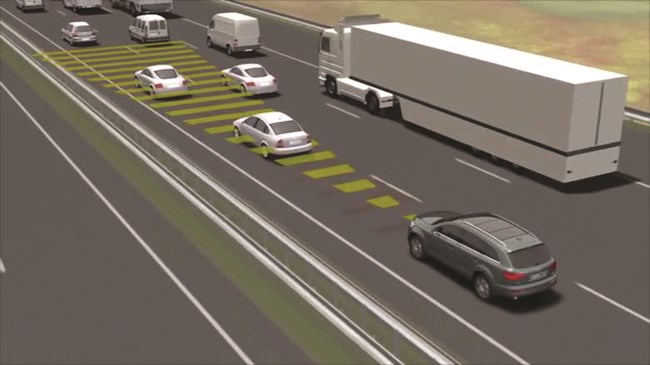
The start point for the best source of fleet information |
Collision avoidance and AEB most popular ADAS for fleets, Arval finds
Date: 16 September 2019 | Author: Sean Keywood

Collision avoidance and autonomous emergency braking (AEB) systems are the most popular advanced driver assistance systems (ADAS) among fleet managers, according to leasing company Arval.
The firm's Mobility Observatory survey found that 49% of managers surveyed picked collision avoidance or warning systems as ones they wanted to have on company cars, followed by AEB (46%), pedestrian detection systems (38%), lane departure warning systems (30%), driver fatigue warning systems (30%), automatic parking systems (20%) and adaptive cruise control (15%).
The research also looked at the measures taken by employers to minimise road risk, and found that the most common was a risk assessment (61%), followed by a safety communication programme (35%), on-road training (33%) and classroom training (22%).
However, there was a wide variance between the smallest and largest businesses. For example, 84% of those with more than 1,000 employees carried out risk assessments, compared to 32% with fewer than 10 employees.
The difference was even more marked for on-road training, with 62% against 11%.
Head of Arval's Mobility Observatory in the UK Shaun Sadlier said: "ADAS are becoming very common on company cars but they are something of an issue for fleets in that there is very little reliable information available about which work best in terms of actually helping drivers avoid accidents.
"What this research represents is therefore really a list of which devices fleet and mobility managers believe will be most useful in real world conditions - and what it indicates they want more than anything is to avoid collisions with other vehicles and pedestrians.
"Our view is that ADAS technology works best in promoting safety when used alongside telematics devices that allow driver behaviour to be highlighted, helping employees to make improvements both by themselves and through options such as training."
Sadlier added that it was concerning to see some suggestion that drivers working for smaller employers were experiencing lower levels of risk assessment than larger ones.
He said: "This is almost certainly an issue of resources. A large organisation will tend to have company-wide risk assessment arrangements in place that cover all their activities in depth and the fleet will benefit from this professionalism.
"What is needed are more services and practical help to enable all smaller employees to raise their safety to comparable standards to their larger counterparts and this is a task in which the entire fleet industry needs to play a part."










